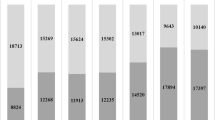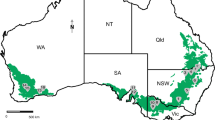Abstract
Phytophthora capsici is a devastating disease of pepper (Capsicum sp.) in Taiwan causing complete loss of commercial fields. The objective of this study was to characterize genetic diversity for 38 newly collected isolates and three historical isolates. Analysis of data includes whole genome sequence for two new isolates and for two isolates collected previously in 1987 and 1995. In addition, 63 single nucleotide polymorphism loci were genotyped using targeted-sequencing, revealing 27 unique genotypes. Genotypes fell into three genetic groups: two of the groups contain 90% (n = 33) of the 2016 isolates, are triploid (or higher), are exclusively the A2 mating type and appear to be two distinct clonal lineages. The isolates from 2016 that grouped with the historical isolates are diploid and the A1 mating type. Whole genome sequence revealed that ploidy varies by linkage group, and it appears the A2 clonal lineages may have switched mating type due to increased ploidy. Most of the isolates were recently race-typed on a set of differential C. annuum, and although there was no direct correlation between virulence and ploidy, many of the triploid isolates were less virulent as compared to the historical diploid isolates. The implications for breeding resistant pepper and conducting population analyses are discussed.




Similar content being viewed by others
References
Ann PJ, Wong IT, Tsai JN (2008) Appearance of A2 mating type of Phytophthora capsici in Taiwan. Plant Pathol Bull 17:69 (Abstr)
Barchenger DW, Sheu ZM, Kumar S, Lin SW, Burlakoti RR, Bosland PW (2017) Race characterization of Phytophthora capsici as a basis for global anticipatory resistance breeding in Capsicum. (communicated)
Bosland PW (2008) Think global, breed local: Specificity and complexity of Phytophthora capsici. In: 19th Int. Pepper Conf. Atlantic City, NJ
Carlson MO, Gazave E, Gore MA, Smart CD (2017) Temporal genetic dynamics of an experimental, biparental field populations of Phytophthora capsici. Front Genet 8:26. doi:10.3389/fgene.2017.00026
Castro-Rocha A, Shrestha A, Lyon B, Grimaldo-Pantoja GL, Flores-Marges JP, Valero-Galván J, Aguirre-Ramíez M, Osuna-Ávila P, Gómez-Dorantes N, Ávila-Quezada G, de Jesús Luna-Ruíz J, Rodríguez-Alvarado G, Fernández-Pavía SP, Lamour K (2016) An initial assessment of the genetic diversity for Phytophthora capsici in northern and central Mexico. Mycol Prog 15:15. doi:10.1007/s11557-016-1157-0
DePristo MA, Banks E, Poplin R, Garimella KV, Maguire JR, Hartl C, Phillppakis AA, del Angel G, Rivas MA, Hanna M, McKenna A, Fennell TJ, Kernytsky AM, Sivachenko AY, Cibulskis K, Gabriel SB, Altshuler D, Daly MJ (2011) A framework for variation discovery and genotyping using next-generation DNA sequencing data. Nat Genet 43:491–498
Dunn AR, Milgroom MG, Meitz JC, McLeod A, Fry WE, McGarth MT, Dillard HR, Smart CD (2010) Population structure and resistance to mefenoxam of Phytophthora capsici in New York state. Plant Dis 94:1461–1468
Earl DA (2012) STRUCTURE HARVESTER: a website and program for visualizing STRUCTURE output and implementing the Evanno method. Conserv Genet Resour 4:359–361
Glosier BR, Ogundiwin EA, Sidhu GS, Sischo DR, Prince JP (2008) A differential series of pepper (Capsicum annuum) lines delineates fourteen physiological races of Phytophthora capsici. Euphytica 162:23–30
Gobena D, Roig J, Galmarini C, Hulvey J, Lamour KH (2012) Genetic diversity of Phytophthora capsici isolates from pepper and pumpkin in Argentina. Mycologia 104:102–107
Granke LL, Quesada-Ocampo L, Lamour KH, Hausbeck MK (2012) Advances in research on Phytophthora capsici on vegetable crops in the United States. Plant Dis 96:1588–1600
Hausbeck MK, Lamour KH (2004) Phytophthora capsici on vegetable crops: research progress and management challenges. Plant Dis 88:1292–1303
Ho WC, Ko WH (1997) A simple method for obtaining single-spore isolates of fungi. Bot Bull Acad Sin 38:41–44
Hu J, Diao Y, Zhou Y, Lin D, Bi Y, Pang Z, Trout Fryxell R, Liu X, Lamour KH (2013) Loss of heterozygosity drives clonal diversity of Phytophthora capsici in China. PLoS ONE 8:e82691. doi:10.1371/journal.pone.0082691
Hulvey J, Hurtado-González O, Aragón-Caballero L, Gobena D, Storey D, Finley L, Lamour KH (2011) Genetic diversity of the pepper pathogen Phytophthora capsici on farms in the Amazonian high jungle of Peru. Am J Plant Sci 2:461–466
Hurtado-Gonzáles O, Aragon-Caballero L, Apaza-Tapia W, Donahoo R, Lamour KH (2008) Survival and spread of Phytophthora capsici in costal Peru. Phytopathology 98:688–694
Jiang L, Sanogo S, Bosland PW (2015) Using recombinant inbred lines to monitor changes in the race structure of Phytophthora capsici in chile pepper in New Mexico. Plant Health Prog 16:235–240
Lamour KH, Hausbeck MK (2001) The dynamics of mefenoxam insensitivity in recombining population of Phytophthora capsici characterized with amplified fragment length polymorphism markers. Phytopathology 91:553–557
Lamour KH, Hausbeck MK (2002) The spatiotemporal genetic structure of Phytophthora capsici in Michigan and implication for disease management. Phytopathology 92:681–684
Lamour KH, Hausbeck MK (2003) Effect of crop rotation on the survival of Phytophthora capsici in Michigan. Plant Dis 87:841–845
Lamour KH, Hu J (2013) Diversity and Phytophthora: a threat to forests, crops and traditional laboratory research-mini review. CAB Rev 8(038). doi:10.1079/PAVSNNR20138038
Lamour KH, Mudge J, Gobena D, Hurtado-Gonzáles OP, Schmutz J, Kuo A, Miller NA, Rice BJ, Raffaele S, Cano LM, Bharti AK, Donahoo RS, Finley S, Huitema E, Hulvey J, Platt D, Salamov A, Savidor A, Sharma R, Stam R, Storey D, Thines M, Win J, Haas BJ, Dinwiddie DL, Jenkins J, Knight JR, Affourtit JP, Han CS, Chertkov O, Lindquist EA, Detter C, Grigoriev IV, Kamoun S, Kingsmore SF (2012a) Genome sequencing and mapping reveal loss of heterozygosity as a mechanism for rapid adaptation in the vegetable pathogen Phytophthora capsici. Mol Plant-Microbe Interact 25:1350–1360
Lamour KH, Stam R, Jupe J, Huitema E (2012b) The oomycete broad-host-range pathogen Phytophthora capsici. Mol Plant Pathol 13:329–337
Leonian LH (1922) Stem and fruit blight of pepper caused by Phytophthora capsici sp. nov. Phytopathology 12:401–408
Li Y, Shen H, Zhou Q, van der Lee T, Huang S (2017) Changing ploidy as a strategy; the Irish potato famine pathogen shifts ploidy in relation to its sexuality. Mol Plant-Microbe Interact 30:45–52
McKenna A, Hanna M, Banks E, Sivachenko A, Cibulskis K, Kernytsky A, Garimella K, Altshuler D, Gabriel S, Daly M, DePristo MA (2010) The genome analysis toolkit: a MapReduce framework for analyzing next-generation DNA sequencing data. Genome Res 20:1297–1303
Meitz JC, Linde CC, Thompson A, Langenhoven S, McLeod A (2010) Phytophthora capsici on vegetable hosts in South Africa: distribution, host range, and genetic diversity. Australas Plant Pathol 39:431–439
Monroy-Barbosa A, Bosland PW (2010) A rapid technique for multiple-race disease screening for phytophthora foliar blight on single Capsicum annuum L. plants. Hortscience 45:1563–1566
Nei M, Kumar S (2000) Molecular evolution and phylogenetics. Oxford University Press, Oxford
Nguyen-Dumont T, Pope BJ, Hammet F, Southey MC, Park DJ (2013) A high-plex PCR approach for massively parallel sequencing. BioTechniques 55:69–74
Peakall R, Smouse PE (2006) GENALEX 6: genetic analysis in excel. Population genetic software for teaching and research. Mol Ecol Notes 6:288–295
Pritchard JK, Stephens M, Donnelly P (2000) Inference of population structure using multilocus genotype data. Genetics 155:945–959
Ronquist F, Huelsenbeck JP (2001) MRBAYES: Bayesian inference of phylogenetic trees. Bioinformatics 17:754–755
Sanogo S (2003) Chile pepper and the threat of wilt diseases. Plant Health Prog. doi:10.1094/PHP-2003-0430-01-RV
Sheu ZM, Chen JR, Wang TC (2009) First report of the A2 mating type of Phytophthora capsici infecting peppers (Capsicum annuum) in Taiwan. Plant Dis 93:548 (Abstr)
Shrestha SK, Miyasaka SC, Shintaku M, Kelly H, Lamour K (2017) Phytophthora colocasiae from Vietnam, China, Hawaii and Nepal: intra–and inter–genomic variations in ploidy and a long–lived, diploid Hawaiian lineage. Mycol Prog. doi:10.1007/s11557-017-1323-z
Silvar C, Merino F, Díaz J (2006) Diversity of Phytophthora capsici in northwest Spain: analysis of virulence, metalaxyl response, and molecular characterization. Plant Dis 90:1135–1142
Sun WX, Jia YJ, O’Neill NR, Feng BZH, Zhang XG (2008) Genetic diversity of Phytophthora capsici from eastern China. Can J Plant Pathol 30:414–424
Sy O, Steiner R, Bosland PW (2005) Inheritance of Phytophthora stem blight resistance as compared to Phytophthora root rot and Phytophthora foliar blight resistance in Capsicum annuum L. J Am Hortic Soc 130:75–78
Sy O, Steiner R, Bosland PW (2008) Recombinant inbred line differential identifies race–specific resistance to Phytophthora root rot in Capsicum annuum. Phytopathology 98:867–870
Tian D, Babadoost M (2004) Host range of Phytophthora capsici from pumpkin and pathogenicity of isolates. Plant Dis 88:485–489
Tu JY, Chou C, Chu PS (2009) The abrupt shift of typhoon activity in the vicinity of Taiwan and its association with western North Pacific–east Asian climate change. J Clim 22:3617–3628
Tuite JF (1969) Plant pathological methods fungi and bacteria. Burgess Publishing Co, Minneapolia
Van der Auwera GA, Carneiro MO, Hartl C, Poplin R, Del Angel G, Levy-Moonshine A, Jordan T, Shakir K, Roazen D, Thibault J, Banks E, Garimella KV, Altshuler D, Gabriel S, DePristo MA (2013) From FastQ data to high confidence variant calls: the Genome Analysis Toolkit best practices pipeline. Curr Protoc Bioinformatics. doi:10.1002/0471250953.bi1110s43
Wickham H (2009) ggplot2: elegant graphics for data analysis. Springer, New York
Yin J, Jackson KL, Candole BL, Csinos AS, Langston DB, Ji P (2012) Aggressiveness and diversity of Phytophthora capsici on vegetable crops in Georgia. Ann Appl Biol 160:191–200
Acknowledgments
The authors thank Dr. Lowell Black for his advice and helpful comments throughout this project. This work was supported by the U.S. Borlaug Fellows in Global Food Security Program through Purdue University, funded by the United States Agency for International Development. Permission to harvest infected pepper was obtained from all landowners and pepper producers, and shipment and processing of isolates was conducted under USDA permit P526P-16-02522 to Kurt Lamour.
Author information
Authors and Affiliations
Corresponding author
Additional information
Section Editor: Marco Thines
Rights and permissions
About this article
Cite this article
Barchenger, D.W., Lamour, K.H., Sheu, ZM. et al. Intra- and Intergenomic variation of Ploidy and Clonality characterize Phytophthora capsici on Capsicum sp. in Taiwan. Mycol Progress 16, 955–963 (2017). https://doi.org/10.1007/s11557-017-1330-0
Received:
Revised:
Accepted:
Published:
Issue Date:
DOI: https://doi.org/10.1007/s11557-017-1330-0




